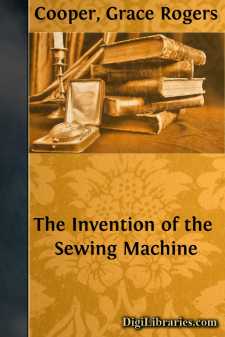Categories
- Antiques & Collectibles 13
- Architecture 36
- Art 48
- Bibles 22
- Biography & Autobiography 813
- Body, Mind & Spirit 142
- Business & Economics 28
- Children's Books 13
- Children's Fiction 10
- Computers 4
- Cooking 94
- Crafts & Hobbies 4
- Drama 346
- Education 46
- Family & Relationships 57
- Fiction 11828
- Games 19
- Gardening 17
- Health & Fitness 34
- History 1377
- House & Home 1
- Humor 147
- Juvenile Fiction 1873
- Juvenile Nonfiction 202
- Language Arts & Disciplines 88
- Law 16
- Literary Collections 686
- Literary Criticism 179
- Mathematics 13
- Medical 41
- Music 40
- Nature 179
- Non-Classifiable 1768
- Performing Arts 7
- Periodicals 1453
- Philosophy 64
- Photography 2
- Poetry 896
- Political Science 203
- Psychology 42
- Reference 154
- Religion 513
- Science 126
- Self-Help 84
- Social Science 81
- Sports & Recreation 34
- Study Aids 3
- Technology & Engineering 59
- Transportation 23
- Travel 463
- True Crime 29
Grace Rogers Cooper
Grace Rogers Cooper was an American historian and author known for her expertise in textile arts, particularly handweaving. She worked as a curator at the Smithsonian Institution, contributing significantly to the study and preservation of historical fabrics and textile machinery. One of her notable works is "The Invention of the Sewing Machine," which explores the technological innovations in sewing throughout history. Her research and publications have made her a key figure in documenting and understanding the evolution of textile arts in America.
Author's Books:
Sort by:
First to appear among the inventions that sparked the industrial revolution in textile making was the flying shuttle, then various devices to spin thread and yarn, and lastly machines to card the raw fibers so they could be spun and woven. Carding is thus the important first step. For processing short-length wool fibers its mechanization proved most difficult to achieve. To the United States in 1793...
more...
Preface It had no instrument panel with push-button controls. It was not operated electronically or jet-propelled. But to many 19th-century people the sewing machine was probably as awe-inspiring as a space capsule is to their 20th-century descendants. It was expensive, but, considering the work it could do and the time it could save, the cost was more than justified. The sewing machine became the...
more...



